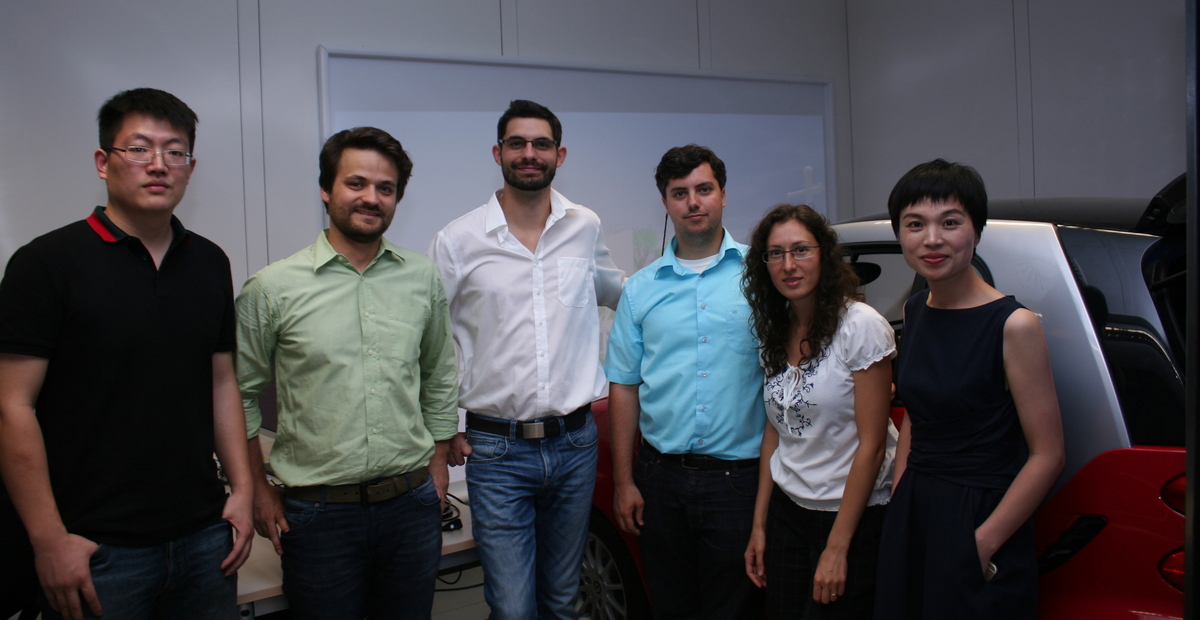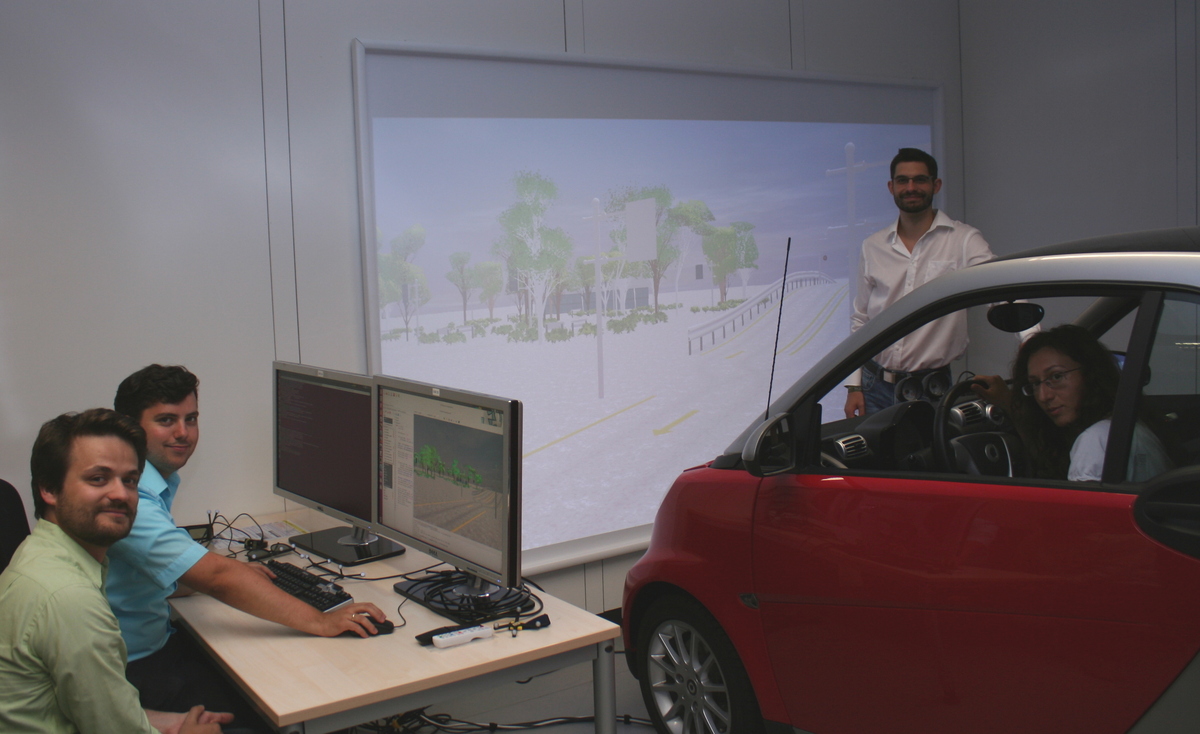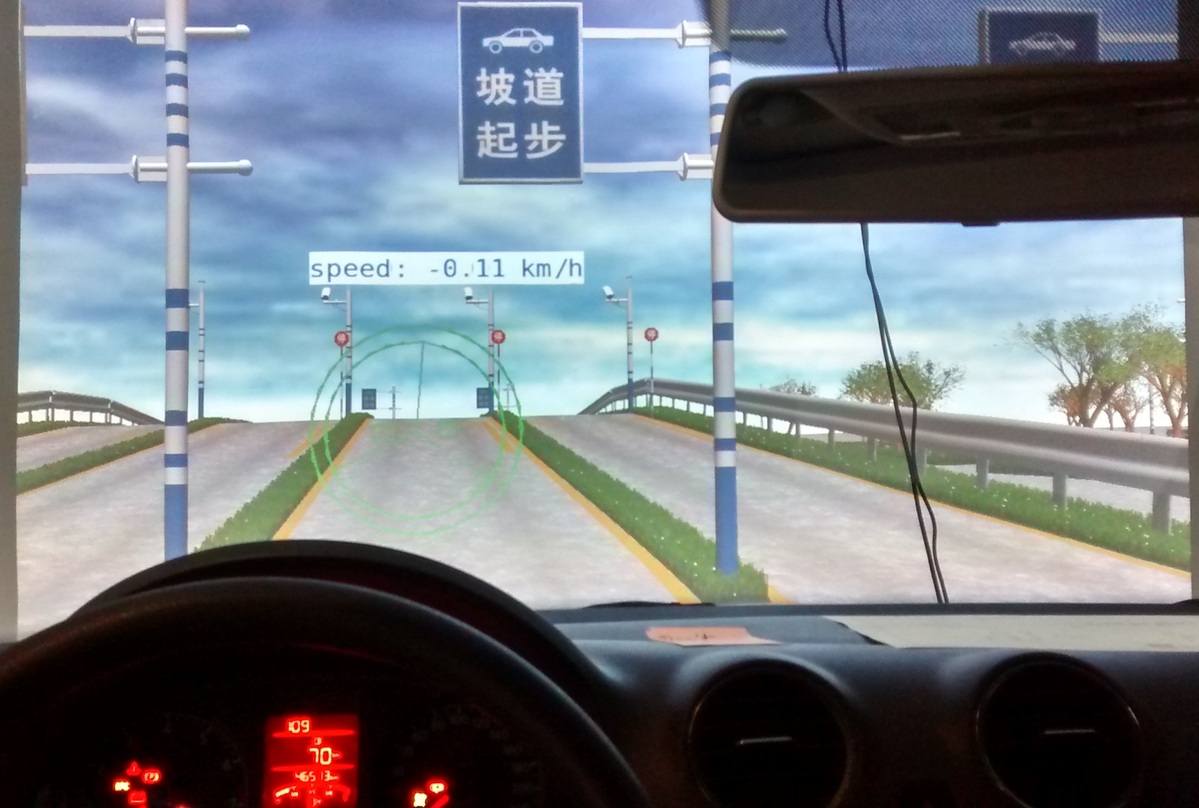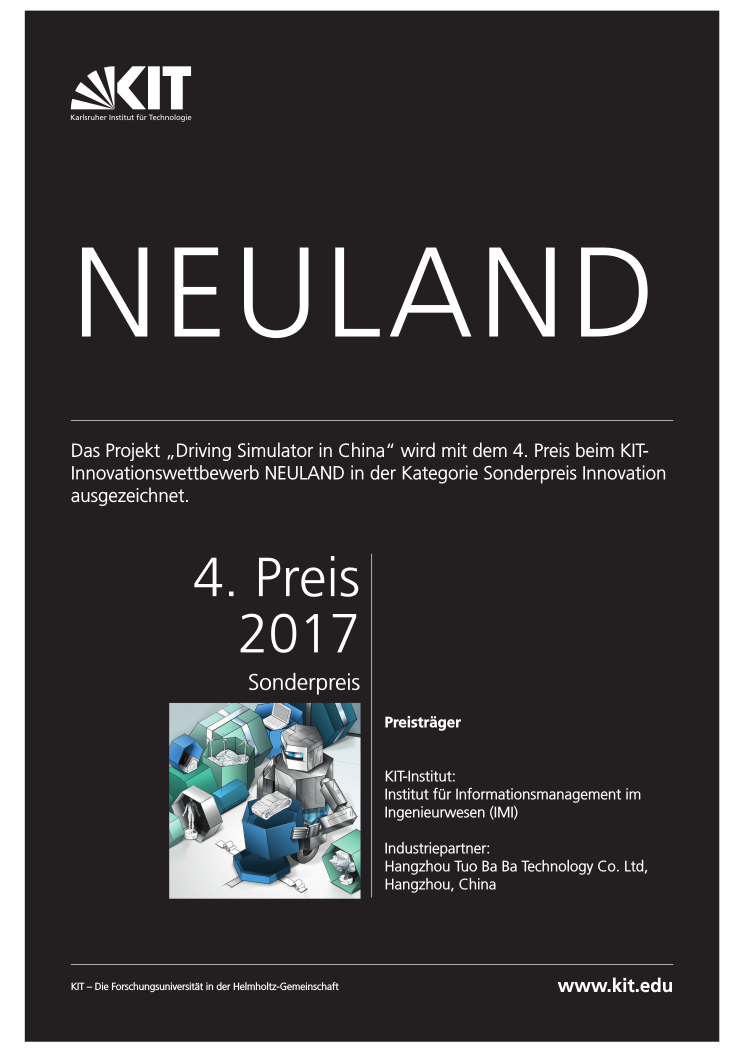DriveSim
- contact:
- project group:
- funding:
KIT TT Project
- Partner:
Hangzhou TouBaba Technology
- startdate:
01. September 2016
- enddate:
30. August 2018
For the project "DriveSim", IMI team develops a novel intelligent driving simulator that is tailored to the needs of the Chinese driving school students using technology like virtual reality and artificial intelliegence to create experience closest to reality.
DriveSim
The Goal
Driving is a widespread activity that permeates the whole society. It is imperative to further improve the learning and training of driving by extending the available infrastructure like driving schools with driving simulators, easily accessible to everyone. The project DriveSim the IMI team develops a novel intelligent driving simulator that is tailored to the needs of the Chinese driving school students.
Hardware Solution
The hardware solution mainly consists of two parts: a real car, and the virtual reality technology. Modern vehicles are equipped with a CAN bus, which is an internal network for the connection of all sensors and actuators. By using this interface a regular vehicle can be modified for being used as a driving simulator without impairing its outer appearance.
Virtual World
The virtual environment is fully generated on the basis of Geographic Information System (GIS) data. Here it is crucial how the generation can be parameterized respectively how users or service providers can adjust the world to their needs. Therefore the configuration logic to be developed contains the parameters for creating streets and its proximity, the traffic and weather situation, road characteristics, as well as specific traffic situations like traffic accidents and vehicle defects. The visualization of road networks and urban areas is based on a semantic model.
Tutoring System
The tutoring system evaluates driving behavior and creates a profile of the user. This profile documents the users learning progress and is used as a basis for the generation of new tasks for the user which neither overwhelm the user nor demand too little from him. Thus a gradual learning progress can be achieved. The complexity of the tasks can be customized by using traffic density, weather conditions and road configurations, as well as providing meta data and assistance to the learner.
Intelligence
To handle all this data in real-time and make the usage of the system more intuitive for basic users (like driving trainers) the virtual reality application is based on a semantic model. The semantic model is enriched with all related data from the static GIS systems up to the dynamic driver behavior data. The implemented reasoner in the virtual reality software PolyVR enables the real-time evaluation of per-defined rules concerning for instance the correct driving behavior. This is how an intelligent virtual environment for driving education is achieved.




